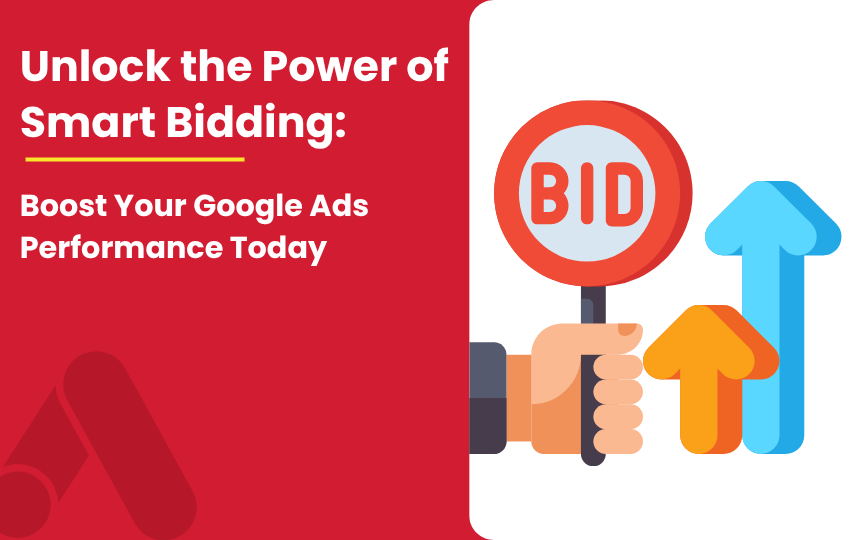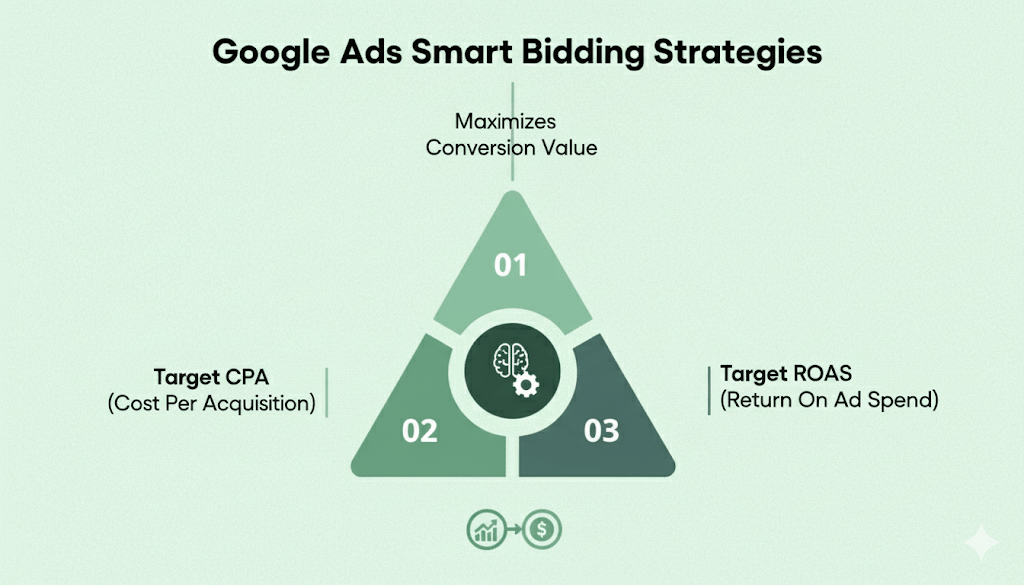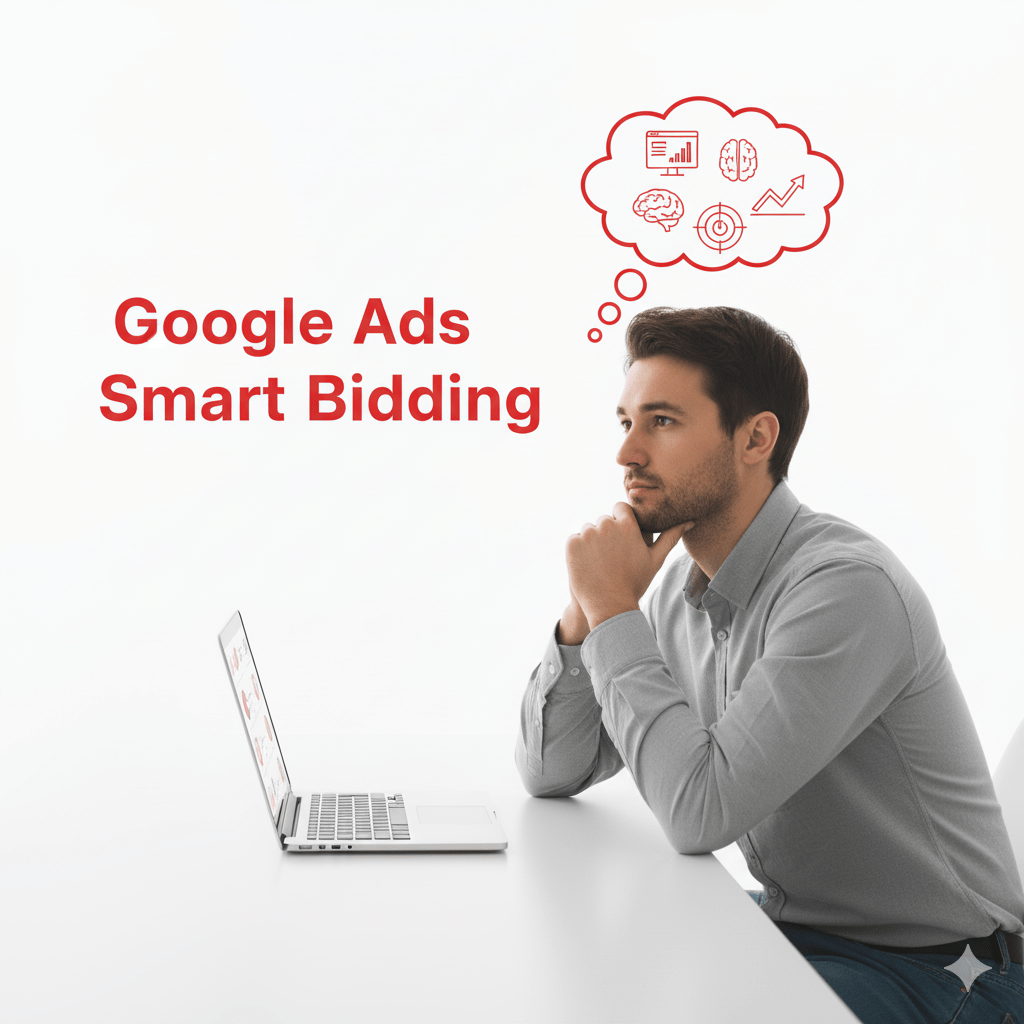
Smart Bidding in Google Ads: The Key to Higher ROI
What if your ads could outsmart the competition—without you lifting a finger?
That’s exactly what Google’s Smart Bidding makes possible. In today’s hyper-competitive digital marketing landscape, businesses no longer have the luxury of wasting ad spend on guesswork. Instead, Smart Bidding leverages the power of machine learning to automatically optimize bids in real time, ensuring your ads reach the right person, on the right device, at the perfect moment.
In this guide, we’ll break down what Smart Bidding is, how it works, the strategies you can use, and proven best practices to maximize ROI with Google Ads.
What is Smart Bidding?
Smart Bidding is an automated bidding strategy in Google Ads that uses machine learning to optimize ad bids for specific goals. It dynamically adjusts your bids in real-time based on various factors such as device, location, time of day, audience signals, and more.
The goal is to help advertisers achieve their desired outcomes, such as maximizing conversions, increasing website traffic, or achieving a higher return on ad spend (ROAS), while reducing the need for manual bid adjustments.
How Does Smart Bidding Work?
Smart Bidding works by utilizing machine learning algorithms to analyze vast amounts of data from past campaigns, user interactions, and other sources.
- Machine Learning Analysis:
Smart Bidding applies machine learning to evaluate previous campaign performance and user activity, helping Google Ads forecast conversion probability.
- Real-Time Auction-Time Bidding:
Bids are adjusted automatically in real time during each auction, ensuring ads appear in the most optimal spots based on the user’s context (e.g., device, location, time of day).
- Individual Auction Evaluation:
Unlike manual bidding, which adjusts at the campaign or ad group level, Smart Bidding evaluates each auction individually, optimizing bids for every impression based on real-time data.

Signals That Influence Smart Bidding
Smart Bidding considers a wide range of signals to determine the most effective bid for each auction. These signals include:
1. Device
The type of device a user is using, whether it’s mobile, desktop, or tablet, plays a crucial role in ad targeting. Ads can be optimized based on device type to enhance user experience and improve conversion rates.
2. Location
Geographic location helps determine which ads are shown to users based on where they are. Targeting users by location ensures that ads are relevant to their environment, which increases the chances of engagement and conversion.
3. Time of Day
The time of day or specific day of the week when a user interacts with an ad can influence performance. Ads can be adjusted to appear at peak times when users are most likely to take action or convert.
4. Language
Language preferences allow advertisers to deliver content in the language users are most comfortable with. This ensures that the messaging resonates with the target audience and improves the likelihood of interaction, conversions, and overall engagement.
5. Demographics
Demographics such as age, gender, and household income (when available) provide key insights into user preferences. Tailoring ads based on these factors ensures they are more relevant, increasing the effectiveness of campaigns and driving better results.
These signals allow Google Ads to tailor bids for each auction to maximize the likelihood of achieving the desired result.
Benefits of Smart Bidding
Here are the three benefits of smart bidding:
1. Increased Efficiency
Here are three ways smart bidding can increase efficiency:
A. Automation of the bidding process: Smart Bidding removes the need for manual bid adjustments by automatically optimizing them based on real-time data.
B. Saves time and effort: Advertisers no longer need to constantly monitor and adjust bids, freeing up resources for other strategic tasks.
C. Simplified campaign management: The system continuously updates bids, ensuring campaigns remain optimized without manual intervention.
Example: Amazon uses Smart Bidding to adjust bids across various product categories automatically, reducing the need for constant manual oversight.
2. Better Performance
Smart bidding leads to better performance by:
A. Real-time optimization: Smart Bidding adjusts bids based on auction-time signals, ensuring that ads are shown to the most relevant audience at the best time.
B. Improved targeting: Ads are served to the right person, on the right device, maximizing the chances of conversion.
C. Focus on results: This strategy helps improve both direct conversions and brand awareness by ensuring optimal ad placement.
3. Maximized ROI
Smart Bidding improves ROI by leveraging machine learning. It optimizes the following:
A. Efficient budget allocation: Smart Bidding optimizes bids for better cost efficiency, ensuring that every dollar spent contributes to meaningful results
B. Targeted optimization: Bids are adjusted according to auction-time data, ensuring ads are shown to consumers more likely to make a purchase.
C. Enhanced profitability: Smart Bidding helps ensure that the most relevant ads are shown to the right customers, maximizing return on investment.
Types of Smart Bidding Strategies
Google Ads offers several Smart Bidding strategies to help advertisers achieve their specific objectives. The most commonly used strategies include:
1. Target CPA (Cost Per Acquisition)
Target CPA is one of the most popular Smart Bidding strategies. With this strategy, advertisers set a target cost per acquisition (CPA), and Google Ads automatically adjusts bids to help achieve that cost. The system optimizes for conversions while aiming to stay within the target CPA.
Target CPA is ideal for advertisers who want to acquire as many conversions as possible within a specific cost per conversion.
2. Target ROAS (Return on Ad Spend)
Target ROAS is a bidding strategy that helps advertisers maximize the return on ad spend. With this strategy, advertisers set a target return on ad spend (ROAS), and Google Ads automatically adjusts bids to help achieve the desired ROAS. The system uses historical data to optimize bids and maximize the value of conversions.
Target ROAS is suitable for advertisers who prioritize generating revenue and want to optimize their campaigns for the highest return on investment.
3. Maximize Conversions
The Maximize Conversions bidding strategy automatically sets bids to help you get the most conversions within your budget. Google Ads adjusts bids in real time to increase the number of conversions you receive. This strategy is perfect for advertisers who want to drive as many conversions as possible without a specific cost target.
4. Maximize Conversion Value
Maximize Conversion Value is similar to Maximize Conversions, but instead of focusing on the number of conversions, this strategy focuses on maximizing the total conversion value (e.g., revenue or transaction value). This strategy is ideal for advertisers with varying conversion values who want to prioritize higher-value conversions.
5. Enhanced Cost Per Click (ECPC)
ECPC is a semi-automated bidding strategy that adjusts manual bids for conversions. While the advertiser still sets bids manually, Google Ads will automatically raise or lower bids for auctions where conversions are more likely. ECPC works best for advertisers who want some level of control over their bids while benefiting from the power of automation.
6. Target Impression Share
Target Impression Share is a Smart Bidding strategy that aims to increase your ad’s visibility. It automatically adjusts your bids to show your ad in a specific percentage of auctions, either at the top of the page, on the first page, or at the absolute top of the page. This strategy is ideal for advertisers who want to increase their brand visibility and reach a larger audience.
Best Practices for Using Smart Bidding
To get the most out of Smart Bidding, here are some best practices to keep in mind:
1. Set Clear Goals
Before implementing Smart Bidding, make sure you have a clear understanding of your campaign goals. Whether you are focusing on conversions, revenue, or brand awareness, having well-defined objectives will allow Smart Bidding to optimize your bids more effectively.
2. Provide Enough Data
Smart Bidding works best when there is sufficient historical data to analyze. Google Ads uses past performance data to make informed predictions about future auctions. If your campaign doesn’t have enough data yet, it might take a while for Smart Bidding to optimize properly. Consider running campaigns with a higher volume of conversions or impressions to gather enough data for better performance.
3. Use Conversion Tracking
Smart Bidding relies heavily on accurate conversion tracking to measure the effectiveness of your campaigns. Be sure to set up and implement proper conversion tracking on your website or app to give Google Ads the data it needs to optimize bids for conversions.
4. Monitor Performance Regularly
Even though Smart Bidding automates the bidding process, it is still important to monitor your campaign’s performance regularly. Keep an eye on your key metrics, such as conversions, CPA, and ROAS, to ensure that your campaigns are meeting your expectations. If needed, you can adjust your goals or bidding strategy to improve results.
5. Start with a Test Campaign
If you are new to Smart Bidding, it’s a good idea to start with a small test campaign to evaluate the performance of different strategies. This allows you to experiment with different goals, bidding strategies, and settings to determine what works best for your business.
Final Thoughts
At Cybez, we understand the importance of maximizing your advertising efforts, and Smart Bidding in Google Ads is a game-changer. By using advanced machine learning, we help you automate bid adjustments, improve efficiency, and boost performance.
With our expertise, you can drive better results, increase ROI, and focus on growing your business. Ready to optimize your campaigns? Contact Cybez today and let us help you achieve your marketing goals!


